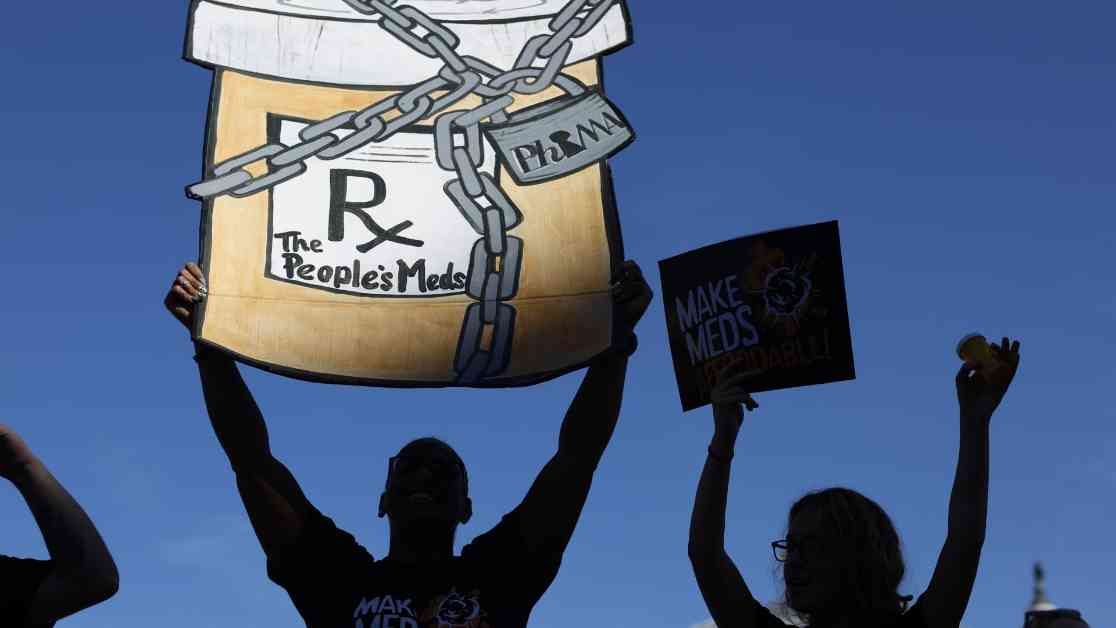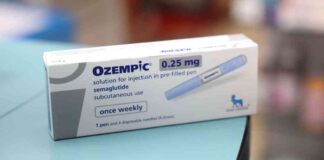The Biden administration made a significant move in the ongoing battle to lower prescription drug costs by releasing the prices for the first 10 drugs subject to Medicare negotiations. This milestone comes after months of intense negotiations between drugmakers and the government, with the aim of making essential medications more affordable for older Americans. The release of these negotiated prices is expected to result in substantial savings for both the Medicare program and its enrollees, providing much-needed relief for those struggling to afford crucial medications.
Background
The issue of skyrocketing prescription drug costs has been a longstanding concern for many Americans, particularly seniors who rely on Medicare for their healthcare needs. Activists have been vocal in their protests against the exorbitant prices of medications, highlighting the financial burden it places on individuals and families. The Biden administration’s decision to take on this challenge head-on demonstrates a commitment to addressing the high cost of healthcare and ensuring that all Americans have access to affordable medications.
The negotiations between drugmakers and Medicare represent a groundbreaking shift in the way drug prices are determined in the United States. For the first time in the history of the federal program, Medicare has been empowered to directly negotiate drug prices with manufacturers, a move that has the potential to lead to significant savings for both the government and consumers. The release of the prices for the first 10 drugs marks a critical step in this process, setting the stage for future negotiations and driving down costs for essential medications.
Impact of Negotiated Prices
The government estimates that the new negotiated prices for the 10 medications will result in approximately $6 billion in net savings for the Medicare program in 2026 alone. This substantial savings will not only benefit the government but also translate into $1.5 billion in out-of-pocket cost savings for Medicare enrollees. The impact of these negotiated prices extends beyond just financial savings, as they have the potential to improve the health and well-being of millions of Americans who rely on these medications to manage chronic conditions and illnesses.
Chiquita Brooks-LaSure, the administrator for the Centers for Medicare and Medicaid Services, emphasized the importance of these negotiated prices in ensuring that individuals can afford essential medications and lead healthier lives. She highlighted the personal impact of these prices, noting that for many people, access to affordable drugs can mean the difference between debilitating illness and the ability to live a full life. The release of the negotiated prices for the first 10 drugs is a significant milestone in the ongoing efforts to make healthcare more accessible and affordable for all Americans.
Legislative Background
The Biden administration’s decision to release the negotiated prices for the first 10 drugs comes on the heels of the second anniversary of the President’s signature Inflation Reduction Act. This landmark legislation gave Medicare the authority to negotiate drug prices directly with manufacturers, marking a significant shift in the way drug pricing is determined in the U.S. The Act has paved the way for a new era of transparency and accountability in the pharmaceutical industry, with the goal of driving down costs and improving access to essential medications for all Americans.
President Joe Biden hailed the release of the negotiated prices as a historic milestone, made possible by the Inflation Reduction Act. He credited Vice President Kamala Harris for her tie-breaking vote in the Senate, which helped secure the passage of the legislation. Harris, in turn, expressed pride in her role in passing the Act and emphasized the ongoing efforts to lower healthcare costs for Americans. The release of the negotiated prices for the first 10 drugs is a testament to the administration’s commitment to tackling the issue of high drug prices and ensuring that all Americans have access to affordable medications.
Overview of Negotiated Prices
The 10 drugs that were subject to the initial round of negotiations cover a range of conditions and illnesses, including diabetes, heart failure, autoimmune diseases, and blood cancers. These medications are among the top 50 with the highest spending for Medicare Part D, accounting for approximately 20% of total prescription drug costs for the program. The release of the negotiated prices for these drugs provides a glimpse into the potential savings that can be achieved through direct negotiations between Medicare and drug manufacturers.
The so-called maximum fair price for each drug represents the highest price that a Medicare Part D plan sponsor or beneficiary can pay for the treatment. This transparent pricing mechanism aims to ensure that individuals have access to affordable medications and are not burdened by exorbitant costs. The negotiations involved a rigorous process of back-and-forth offers between companies and Medicare, with the final prices reflecting a balance between cost savings and maintaining the financial viability of drug manufacturers.
Challenges and Future Directions
While the release of the negotiated prices for the first 10 drugs is a significant step forward, there are challenges and uncertainties that lie ahead. The pharmaceutical industry has expressed concerns about the impact of these price negotiations on their revenue growth, profits, and drug innovation. Several drugmakers and trade groups have filed lawsuits seeking to derail the negotiations, citing constitutional concerns and potential financial losses.
Despite these challenges, the Biden administration remains committed to the goal of reducing prescription drug costs and improving access to essential medications for all Americans. The upcoming rounds of negotiations will focus on additional drugs and treatments, with the aim of expanding the scope of cost savings and ensuring that Medicare enrollees have access to affordable care. The release of the negotiated prices for the first 10 drugs sets a precedent for future negotiations and underscores the administration’s commitment to addressing the issue of high drug prices.
In conclusion, the release of the negotiated prices for the first 10 drugs subject to Medicare negotiations represents a significant milestone in the ongoing efforts to lower prescription drug costs and improve access to essential medications for all Americans. The savings generated by these negotiated prices will benefit both the Medicare program and its enrollees, providing much-needed relief for individuals struggling to afford critical medications. As the Biden administration continues its efforts to rein in the rising cost of medications, the release of these negotiated prices sets the stage for future negotiations and paves the way for a more transparent and affordable healthcare system for all.






















